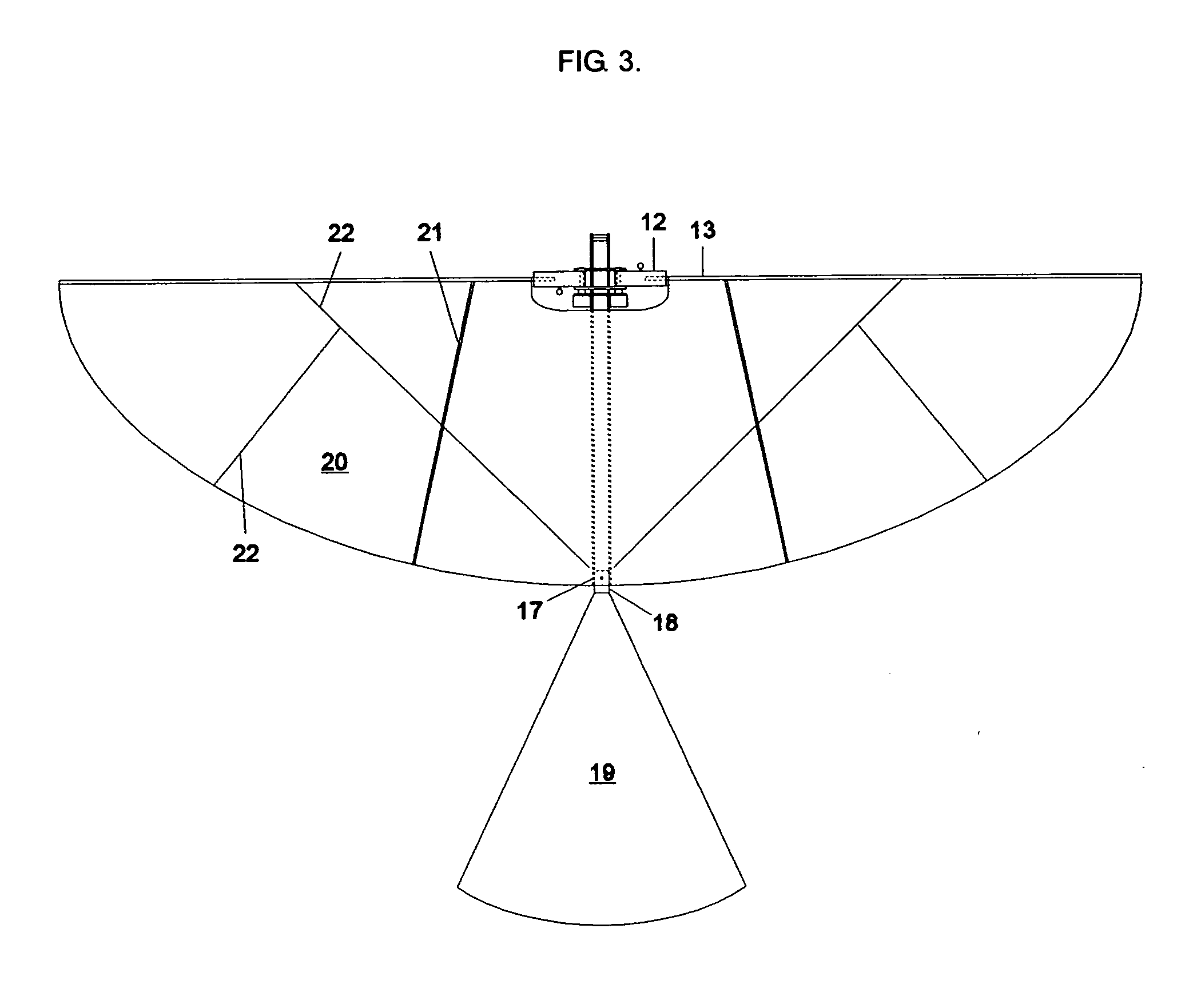Ornithopter with independently controlled wings
an ornithopter and independently controlled technology, applied in the field of aeronautical equipment, can solve the problems of inability to hover, inability to control at low speeds, and inability to achieve hover, so as to maneuver effectively, and increase the maneuverability of the ornithopter
- Summary
- Abstract
- Description
- Claims
- Application Information
AI Technical Summary
Benefits of technology
Problems solved by technology
Method used
Image
Examples
Embodiment Construction
—PREFERRED EMBODIMENT
[0018] Typical ornithopter flight control systems include a radio receiver, an electronic speed control for the drive motor, and two servos. The servos control the flight path by moving a planar tail surface, or sometimes by moving an elevator and rudder like those used in radio controlled airplanes. This system provides a means of directional control, but the maneuverability of the ornithopter is limited.
[0019] In the invention described here, the wings rather than tail provide the maneuvering forces. This is achieved by using a separate motor and geartrain for each wing, controlled by a microprocessor. This allows the wings to move independently of each other, for steering, and it allows the wing flapping speed to vary systematically in different parts of the flapping cycle, in order to control the pitch of the aircraft. This system allows much greater maneuverability, particularly at low speeds where tail surfaces are not very effective. It also introduces n...
PUM
 Login to View More
Login to View More Abstract
Description
Claims
Application Information
 Login to View More
Login to View More - R&D
- Intellectual Property
- Life Sciences
- Materials
- Tech Scout
- Unparalleled Data Quality
- Higher Quality Content
- 60% Fewer Hallucinations
Browse by: Latest US Patents, China's latest patents, Technical Efficacy Thesaurus, Application Domain, Technology Topic, Popular Technical Reports.
© 2025 PatSnap. All rights reserved.Legal|Privacy policy|Modern Slavery Act Transparency Statement|Sitemap|About US| Contact US: help@patsnap.com



